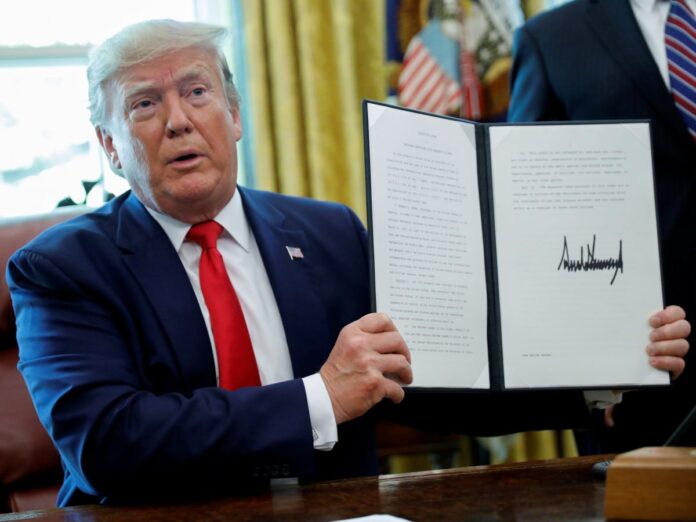Trump’s New Plans to Pressure Iran
Following a recent assassination attempt by an Iranian operative, U.S. President-elect Donald Trump is planning to enforce strict new sanctions against Iran. This move comes as Trump, previously known for a strong stance on Iran, prepares to reinstate the “maximum pressure” policy he applied during his first term. This strategy aims to weaken Iran’s economic resources and to limit its nuclear expansion and funding of groups the U.S. has designated as terrorist organizations.
The assassination plot surfaced after the U.S. Department of Justice charged a man, accused of working with Iran’s Islamic Revolutionary Guard Corps (IRGC), in connection with the plan. According to reports, the operative claimed an IRGC official had directed him to carry out surveillance on Trump and devise a plan to kill him. This incident has further fueled Trump’s determination to intensify sanctions on Iran, particularly targeting its oil exports and related industries, which are critical to Iran’s economy.
Repeating a Strategy of “Maximum Pressure”
During his first presidency, Trump pulled the United States out of the Iran nuclear deal and imposed a strict embargo on Iranian oil exports, aiming to cut off the country’s main source of revenue. The approach was part of a broader “maximum pressure” campaign, which the Trump administration hoped would deter Iran from continuing its nuclear activities and funding of militias across the Middle East. The upcoming administration plans to revive this approach, focusing on curtailing any remaining economic ties Iran may have internationally, especially in oil markets.
Sources indicate that this renewed strategy will involve extensive sanctions on companies and organizations that handle Iranian oil, pressuring them to cut ties with Iran or face serious financial consequences. Trump’s goal appears to be to push Iran into an economic crisis, limiting its ability to fund foreign alliances and pursue nuclear ambitions. With Iran’s financial status reportedly weaker now, Trump’s advisors see this as an opportunity to capitalize on the situation.
As one former official noted, “Iran is in a position of weakness,” hinting at the expectation that sanctions would create further instability within Iran. This stance reflects Trump’s long-held belief that economic pressure could curb Iran’s influence, limit its nuclear program, and reduce its support for militant groups operating across the region.
Rising Tensions in the Middle East
The relationship between Iran and other regional players has intensified in recent months, particularly following military actions involving Israel. A recent series of events highlights the ongoing regional tensions between Iran and its adversaries. The Israel Defense Forces (IDF) recently took direct action against leaders connected to Iran, including members of Hezbollah and Hamas. Some have seen them as attacks on Iran’s larger “axis of resistance” throughout the Middle East. Hezbollah’s leader was killed in Beirut in a significant blow to the Iran-backed group, followed by the killing of Yahya Sinwar, a Hamas leader, in Rafah by IDF forces. Both incidents delivered major setbacks to Iran’s influence in the region.
In response, the Islamic State has also made statements regarding potential revenge against Israel following a separate attack on October 26 that targeted Iranian military facilities. Although retaliation has yet to occur, these events underscore the complex and escalating conflict involving Iran, Israel, and allied groups on both sides.
These developments reveal a cycle of action and reaction that has increased the tension between Iran and other regional powers, particularly those with U.S. support. For Trump, this regional instability and Iran’s reported position of economic strain offer an opportunity to renew sanctions, aiming to keep pressure on Iran and limit its ability to respond both economically and militarily.
The re-imposed sanctions under Trump’s leadership will likely target not only Iranian oil but also financial networks, trade partners, and logistical pathways that Iran relies on for both its nuclear program and regional influence. His administration’s efforts to “isolate” Iran economically and diplomatically reflect a hardline strategy that echoes the approach Trump had taken during his first term. The goal is to limit Iran’s financial strength and weaken its influence, impacting its alliances and reducing the resources it can allocate toward its controversial nuclear ambitions.



